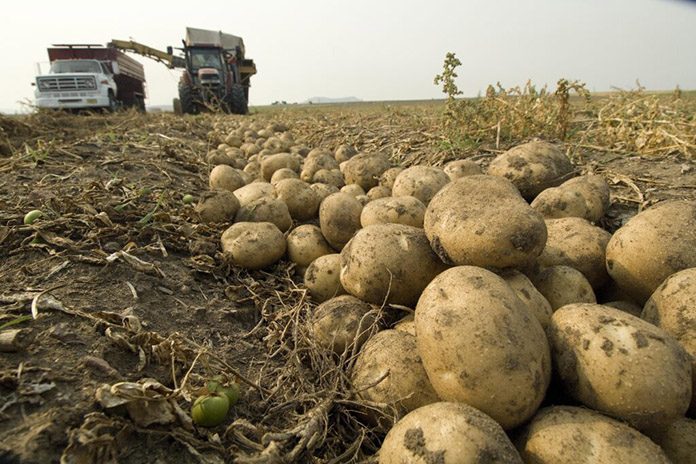
By Alex Baumhardt
Lamb Weston’s French fry production plant in Hermiston has been discharging too much nitrate-loaded water onto area farms, according to the Oregon Department of Environmental Quality.
The wastewater flowing from the plant has contaminated the groundwater, causing nitrate levels in some nearby wells to measure four to seven times the safe limit set by the federal Environmental Protection Agency, according to DEQ.
The state agency on March 31 warned the company that it faced enforcement action for contaminating the groundwater.
It was the second such notice issued to the company in recent months. In November, DEQ told the company it had been discharging too much tainted water on area farmland and faced enforcement action for that as well. The agency doesn’t disclose such notices on its website or otherwise publicize the findings until an enforcement has been made.
The notices ask the company about what steps it intends to take to cure the violations. For the most recent notice, Lamb Weston has 45 days. The agency then will consider whether to require corrective action or fine the company, according to Laura Gleim, public affairs specialist at DEQ.
The Hermiston french fry plant is Lamb Weston’s second largest plant in the Columbia River Basin. As of 2019, the plant had more than 500 employees who made nearly 750 million pounds of frozen potato products annually, according to Lamb Weston’s website.
Company officials could not be immediately reached Monday for comment.
The violations were discovered when the plant applied to renew its water discharge permit from DEQ. The permit allows the plant to recycle water used to wash and process potatoes, which come into the plant covered in soil and fertilizers. The facility distributes the wastewater to nearby farms as a source of nutrient-rich water for irrigation.
But Lamb Weston overapplied the water on farms 75 times between 2016 and 2020, according to compliance reports that DEQ reviewed. During that time, 189 tons of nitrate in excess of permitted levels were applied in an area already deemed a vulnerable groundwater management area.
Such areas receive extra resources and planning from DEQ and designated committees in the area to reduce groundwater contamination.
DEQ said in its notices that wells down slope from where Lamb Weston’s nitrate-rich wastewater was applied had levels of nitrate between 36 and 79 parts per million. EPA limits for safe drinking water are no more than 10 parts per million.
Nitrate is difficult and expensive to remove from water, and for those who rely on wells for their drinking water, getting rid of nitrate requires filters that cost thousands of dollars.
This article is courtesy of the Oregon Capital Chronicle.








